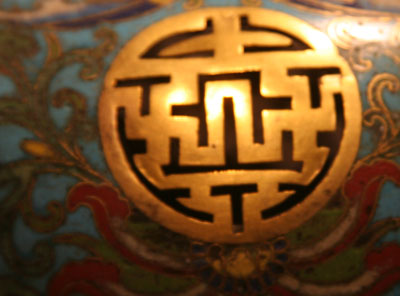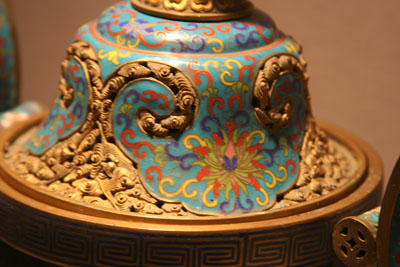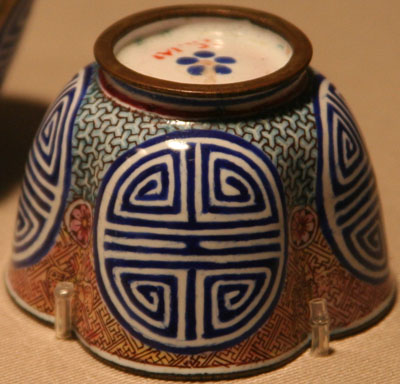Decorative Designs in Chinese Art 中国文物的纹饰
Cloisonne 景泰蓝
Click on any word to see more details.
Cloisonne 景泰蓝
Cloisonne enamel techniques were brought to China from Persia during the Yuan Dynasty. The techniques were developed further in the Ming Dynasty and became widespread during the reign of seventh Ming Emperor Jingtai 景泰 (reigned 1449-1457) This is the origin of the Chinese name for cloisonne Jingtailan 景泰蓝, with lan 蓝 (blue) being the most common background color. The cloisonne items in the pictures below show this blue background color. To produce a cloisonne utensil, the artist first produces a copper roughcast, attaches some copper wires forming decorative patterns, adds enamel between the spaces in the wires, and then fires the item in a kiln.

The design shown above is the luck character 吉 auspicious pattern 吉祥图案.

The design on the cup shown below is the long life character 寿 auspicious pattern.
Chinese
Pinyin English
